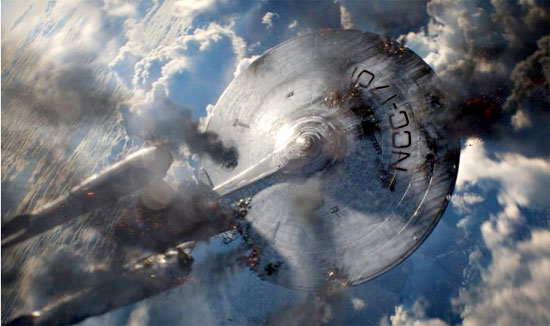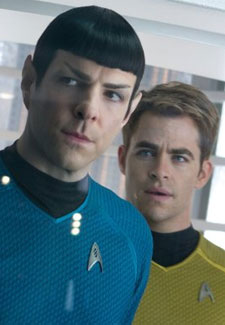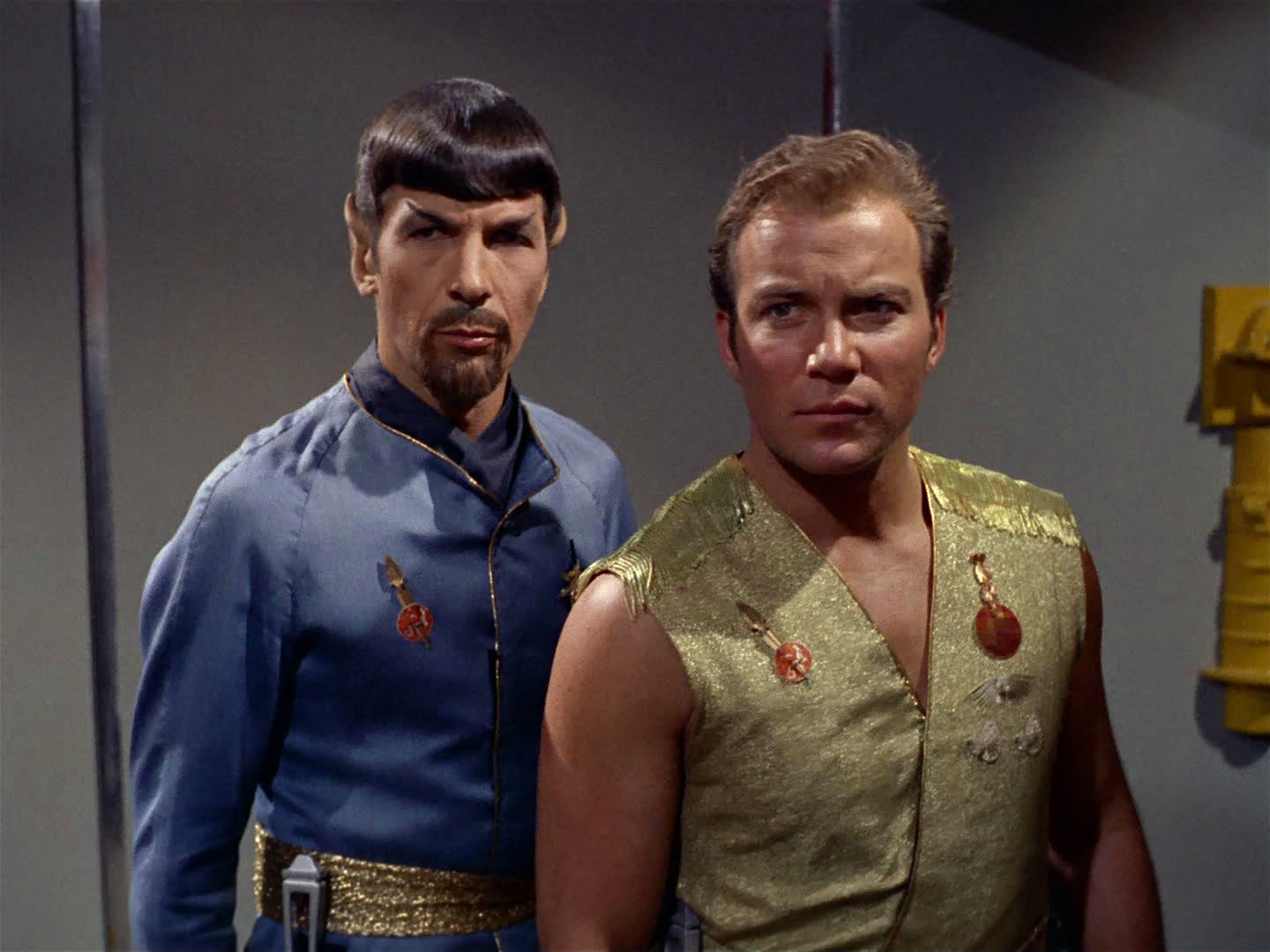Star Trek Returns
J.J. Abrams's latest has plenty of bang, but also rekindles the franchise's noble roots

Star Trek: Into Darkness
What does it mean to make a Star Trek movie? Director J.J. Abrams skirted this question when he brought the U.S.S. Enterprise back to life four years ago, plotting a new origin story for Captain James T. Kirk that was engorged with interstellar combat, death-defying stunts and an endless parade of fistfights. The revival was a delight, of course – but at what cost? It seemed less a Star Trek movie than a sci-fi action romp that just happened to be set against a familiar backdrop.
Star Trek Into Darkness, presumably Abrams’s last volley in this galaxy before he rockets off to direct a forthcoming Star Wars movie, is innately concerned with these sorts of creeping temptations. While less consistently enjoyable than the last – and more prone to clumsy narrative lapses – it challenges militaristic violence with surprisingly thoughtful criticism. Abrams is rekindling the ethnographic idealism that sustained Kirk and crew for nearly half a century. He hasn’t made an outright pacifist movie, but he’s made a sensible one.

Star Trek: Into Darkness. Quinto and Pine as Spock and Kirk
This time around, we meet Kirk (Chris Pine) in the jungle of a colorfully imagined planet as he races through a wild overgrown forest, hotly pursued by a tribe of primitive, chalk-faced natives. Spock (Zachary Quinto) is nearby, lowering himself into the mouth of an active volcano minutes before a cataclysmic eruption will literally end the world. Their mission? To save the natives, stabilize the volcano, and return to orbit — all without being spotted, lest they interfere with the natural development of the planet. (That last part doesn’t quite go according to plan, and as punishment, Kirk briefly loses his command of the Enterprise.) It’s a thrilling opening sequence, rife with the sort of inventive visuals that suggest a broader canvas than what’s shown on screen.
Back on Earth, a mysterious man supposedly named John Harrison (Benedict Cumberbatch) masterminds a terrorist bombing in London. When Starfleet scrambles to respond, Harrison attacks again, all but guaranteeing Admiral Alexander Marcus (Peter Weller) will unleash his troubling military might to find and kill him. No arrest, no judge, no jury. Just assassination.
From there, Star Trek Into Darkness twists toward a story any Trekkie will recognize. For the sake of the unenlightened: Harrison is not who he seems, and although his methods are never even remotely explained, he aims to slaughter millions.
There’s nothing particularly exceptional about this storyline. It’s plagued by vague motivations and plot devices, which undermine any sort of meaningful narrative consistency. At best, screenwriters Damon Lindelof, Alex Kurtzman, Roberto Orci are respectful of what they crib. All too often, however, they plot derivative scenes that mimic well-known moments in other Star Trek films. (One particularly egregious offense stands out above the rest. If you’re familiar with Star Trek II, you’ll know it when you see it.) There’s a thin line between homage and imitation, and at times, it’s tough to recognize where Lindelof and company stand.




Starring Chris Pine, Zachary Quinto, Benedict Cumberbatch
Area Theaters
Nonetheless, Star Trek Into Darkness asks questions of both the universe in which it lives, and the world in which it will be seen. Abrams dares to challenge society’s militaristic tendencies, casting a careful eye not only toward the violent inclinations of his earlier movie, but also toward drone strikes and “enemy combatants” and our cultural appetite for military aggression. When Scotty (Simon Pegg) pleads with Kirk about Enterprise’s mission to kill Harrison – ”Is this what we are now? I thought we were explorers!” – Abrams is acknowledging the contradictory goals of Star Trek Into Darkness. It needs to encourage (or at least encounter) the ideals of peace, but not at the expense of the awesome visual effects we’ve come to expect.
Abrams knows this. He’s critiquing militarism through the veneer of a big-budget franchise blockbuster. That’s why he emphasizes consequence over combat, ratcheting up the tension not when the Enterprise is in battle, but when it’s struggling to hold itself together. After all, Kirk’s mission is to explore strange new worlds, to seek out new life and new civilizations, not simply blow up the bad guy and look fit in a Lycra uniform. These stories need conflict more often than they need battle. When Star Trek: The Original Series debuted in 1966, it reflected creator Gene Roddenberry’s earnest, progressive vision of the future. Abrams occasionally wanders from those ideals, but in Star Trek Into Darkness, he doesn’t abandon them. Those ideals speak, Kirk explains, ”to who we once were and who we must be again.”
Support Metro Weekly’s Journalism
These are challenging times for news organizations. And yet it’s crucial we stay active and provide vital resources and information to both our local readers and the world. So won’t you please take a moment and consider supporting Metro Weekly with a membership? For as little as $5 a month, you can help ensure Metro Weekly magazine and MetroWeekly.com remain free, viable resources as we provide the best, most diverse, culturally-resonant LGBTQ coverage in both the D.C. region and around the world. Memberships come with exclusive perks and discounts, your own personal digital delivery of each week’s magazine (and an archive), access to our Member's Lounge when it launches this fall, and exclusive members-only items like Metro Weekly Membership Mugs and Tote Bags! Check out all our membership levels here and please join us today!
























